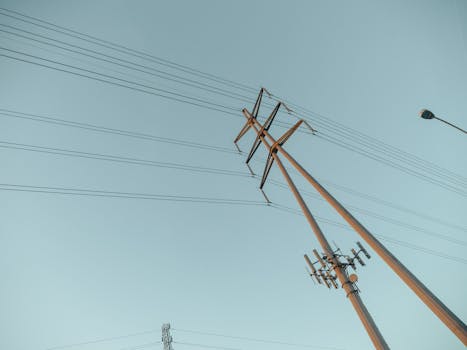“Series vs. Parallel: Powering Your Solar Choice for Maximum Efficiency!”
When it comes to wiring solar panels, two primary configurations are commonly used: series and parallel. Each method has its own advantages and disadvantages, impacting the overall efficiency, voltage, and current output of a solar power system. Wiring solar panels in series increases the total voltage while maintaining the same current, making it suitable for systems that require higher voltage inputs. Conversely, wiring in parallel keeps the voltage constant but increases the current, which can be beneficial for systems that need to maximize power output in low-light conditions. Understanding the differences between these configurations is crucial for optimizing solar energy systems and ensuring they meet specific energy needs effectively. This guide will explore the benefits and drawbacks of each wiring method to help determine which is better for your solar installation.
Wiring Solar Panels in Series: Advantages and Disadvantages
Wiring solar panels in series is a common configuration that offers distinct advantages and disadvantages, making it essential for solar energy enthusiasts and professionals to understand its implications. When solar panels are connected in series, the positive terminal of one panel is connected to the negative terminal of the next, creating a single string of panels. This configuration results in a cumulative voltage output while maintaining the same current level as that of an individual panel. One of the primary advantages of wiring solar panels in series is the increased voltage, which can be particularly beneficial for systems that require higher voltage inputs, such as grid-tied inverters. By boosting the voltage, fewer strings may be needed to achieve the desired output, potentially reducing the amount of wiring and installation complexity.
Moreover, series wiring can enhance the overall efficiency of the solar power system. In a series configuration, the current flowing through each panel is identical, which means that the performance of the entire string is determined by the weakest panel. This characteristic can be advantageous in certain scenarios, particularly when panels are exposed to uniform sunlight conditions. In such cases, the series connection allows for a more straightforward assessment of system performance, as the output is predictable and consistent. Additionally, series wiring can simplify the design of the solar array, as it allows for a more compact arrangement of panels, which can be particularly useful in space-constrained installations.
However, despite these advantages, there are notable disadvantages to consider when wiring solar panels in series. One significant drawback is the impact of shading on the performance of the entire string. If one panel in a series configuration becomes shaded or experiences a drop in performance due to dirt, debris, or other obstructions, it can significantly reduce the output of the entire string. This phenomenon, known as the “Christmas light effect,” occurs because the current flowing through the series is limited by the lowest-performing panel. Consequently, even if the other panels are functioning optimally, the overall energy production can be compromised.
Another disadvantage of series wiring is the increased voltage levels, which can pose safety risks and complicate system design. Higher voltages require more robust components, such as wiring and connectors, to handle the increased electrical load. This necessity can lead to higher costs and more complex installation requirements. Additionally, in the event of a fault or failure, troubleshooting a series-wired system can be more challenging, as the entire string may need to be taken offline to identify the issue.
In conclusion, wiring solar panels in series presents a mix of advantages and disadvantages that must be carefully weighed when designing a solar energy system. The increased voltage output and potential for simplified installation are compelling benefits, particularly for specific applications. However, the susceptibility to shading and the complexities associated with higher voltage levels cannot be overlooked. Ultimately, the decision to wire solar panels in series should be based on a thorough assessment of the specific installation conditions, performance expectations, and safety considerations. By understanding these factors, solar energy users can make informed choices that align with their energy needs and maximize the efficiency of their solar power systems.
Wiring Solar Panels in Parallel: Advantages and Disadvantages
Wiring solar panels in parallel is a common configuration that offers distinct advantages and disadvantages, making it essential for solar energy enthusiasts and professionals to understand its implications. When solar panels are connected in parallel, the positive terminals of each panel are linked together, as are the negative terminals. This configuration allows the system to maintain the same voltage while increasing the overall current output. One of the primary advantages of wiring solar panels in parallel is the enhanced reliability of the system. If one panel experiences shading or a malfunction, the other panels continue to operate effectively, ensuring that the overall energy production is not significantly compromised. This characteristic is particularly beneficial in environments where shading from trees, buildings, or other obstructions is a concern.
Moreover, parallel wiring can be advantageous in terms of system scalability. As energy needs grow or as budget allows, additional panels can be easily integrated into the existing system without the need for extensive reconfiguration. This flexibility makes parallel wiring an appealing option for homeowners and businesses looking to expand their solar capabilities over time. Additionally, because the voltage remains consistent across the system, it can be easier to match the output to the inverter specifications, which can simplify the installation process and reduce the risk of voltage-related issues.
However, while there are notable benefits to wiring solar panels in parallel, there are also disadvantages that must be considered. One significant drawback is the increased current flowing through the wiring. Higher current levels can lead to greater energy losses due to resistance in the wires, which can ultimately reduce the overall efficiency of the system. To mitigate this issue, it is crucial to use appropriately sized wiring to handle the increased current, which can add to the installation costs and complexity.
Another disadvantage of parallel wiring is that it can require more space for installation. Since each panel operates independently, the layout may need to accommodate the additional wiring and connections, which can be a limiting factor in smaller installations. Furthermore, the need for multiple connections increases the potential points of failure within the system. Each connection introduces a risk of corrosion or loosening over time, which can lead to decreased performance or even system failure if not properly maintained.
In addition, while parallel wiring allows for continued operation despite the failure of one panel, it does not optimize the overall voltage output. This can be a disadvantage in systems where higher voltage is desired for efficiency or compatibility with specific inverters. In such cases, the inability to increase voltage can limit the performance of the solar energy system.
In conclusion, wiring solar panels in parallel presents a mix of advantages and disadvantages that must be carefully weighed when designing a solar energy system. The reliability and scalability of parallel configurations make them appealing for many users, particularly in shaded environments or for those looking to expand their systems over time. However, the increased current, potential for energy loss, and additional space requirements are important considerations that can impact the overall effectiveness and efficiency of the installation. Ultimately, the choice between parallel and series wiring will depend on individual circumstances, including energy needs, installation space, and budget constraints. Understanding these factors will enable users to make informed decisions that align with their solar energy goals.
Comparing Efficiency: Series vs. Parallel Wiring for Solar Panels
When considering the installation of solar panels, one of the critical decisions involves the wiring configuration: series or parallel. Each method has its own set of advantages and disadvantages, which can significantly impact the overall efficiency of a solar power system. Understanding these differences is essential for homeowners and businesses alike, as the choice can influence energy output, system performance, and even long-term maintenance.
Wiring solar panels in series means connecting the positive terminal of one panel to the negative terminal of the next. This configuration results in a cumulative voltage increase while maintaining the same current throughout the circuit. One of the primary benefits of series wiring is that it can produce a higher voltage output, which is particularly advantageous for systems that require long-distance transmission of electricity. Higher voltage can reduce the current flowing through the wires, thereby minimizing energy losses due to resistance. Consequently, series wiring is often favored in installations where space is limited, as fewer panels can achieve the desired voltage.
However, series wiring does come with its drawbacks. A significant concern is the impact of shading on the performance of the entire string of panels. If one panel in a series is shaded or underperforming, it can reduce the output of the entire series. This phenomenon, known as the “Christmas light effect,” means that if one bulb goes out, the entire string may fail to light up. Therefore, careful consideration must be given to the placement of panels to avoid shading from trees, buildings, or other obstructions. Additionally, if one panel fails, it can affect the performance of the entire series, leading to potential energy losses.
On the other hand, wiring solar panels in parallel involves connecting all the positive terminals together and all the negative terminals together. This configuration maintains the same voltage across all panels while allowing the current to increase. One of the most significant advantages of parallel wiring is its resilience to shading. If one panel is shaded or malfunctions, the other panels can continue to operate at their optimal performance levels. This characteristic makes parallel wiring an attractive option for installations where shading is a concern or where panels may be oriented in different directions.
Despite its advantages, parallel wiring also has some limitations. The increased current can lead to higher energy losses due to resistance in the wiring, especially if the wires are not adequately sized. Moreover, parallel configurations may require more complex wiring and additional components, such as fuses or circuit breakers, to ensure safety and efficiency. This complexity can lead to higher installation costs and maintenance requirements over time.
Ultimately, the choice between series and parallel wiring for solar panels depends on various factors, including the specific site conditions, the layout of the installation, and the energy needs of the user. For instance, in areas with minimal shading and where higher voltage is beneficial, series wiring may be the preferred option. Conversely, in locations prone to shading or where flexibility in panel orientation is necessary, parallel wiring could be more advantageous.
In conclusion, both series and parallel wiring configurations have their unique benefits and challenges. By carefully evaluating the specific circumstances of a solar installation, users can make informed decisions that optimize efficiency and performance, ensuring that their investment in solar energy yields the best possible returns.
Factors to Consider When Choosing Between Series and Parallel Wiring
When deciding between wiring solar panels in series or parallel, several critical factors come into play that can significantly influence the performance and efficiency of a solar energy system. Understanding these factors is essential for making an informed choice that aligns with your energy needs and installation conditions.
One of the primary considerations is the voltage and current requirements of your system. In a series configuration, the voltage of each panel adds up, while the current remains constant. This means that if you have panels with a lower voltage output, wiring them in series can help achieve the higher voltage needed for certain inverters or battery systems. Conversely, in a parallel configuration, the current from each panel adds up, while the voltage remains constant. This setup is particularly beneficial if you are working with panels that have different voltage outputs or if you want to ensure that shading on one panel does not significantly affect the overall system performance.
Another important factor to consider is the impact of shading. In a series configuration, if one panel is shaded, it can reduce the output of the entire string, as the current is limited by the lowest-performing panel. This phenomenon, known as the “Christmas light effect,” can lead to significant energy losses. On the other hand, wiring panels in parallel can mitigate this issue, as each panel operates independently. Therefore, if one panel is shaded, the others can continue to produce energy, making parallel wiring a more resilient option in environments where shading is a concern.
Additionally, the physical layout and space available for installation can influence your decision. If you have limited space and need to maximize the output from a small area, series wiring may be advantageous, as it allows for a higher voltage output without requiring additional panels. However, if you have ample space and want to ensure flexibility in your system design, parallel wiring may be more suitable, as it allows for easier expansion in the future.
Moreover, the type of inverter you plan to use is another crucial factor. Some inverters are designed to work optimally with series configurations, while others are better suited for parallel setups. It is essential to match your wiring configuration with the specifications of your inverter to ensure maximum efficiency and performance. Additionally, consider the potential for future upgrades or expansions. If you anticipate adding more panels down the line, a parallel configuration may offer greater flexibility, allowing you to integrate new panels without significant reconfiguration.
Lastly, the overall system voltage and safety considerations should not be overlooked. Higher voltage systems can be more efficient in terms of wire size and energy loss, but they also require careful handling and adherence to safety standards. Conversely, lower voltage systems may be safer and easier to manage but could require thicker wires to handle higher currents.
In conclusion, choosing between series and parallel wiring for solar panels involves a careful evaluation of voltage and current requirements, shading impacts, installation space, inverter compatibility, future expansion plans, and safety considerations. By weighing these factors thoughtfully, you can select the wiring configuration that best meets your energy needs and optimizes the performance of your solar energy system.
Q&A
1. **Question:** What is the main advantage of wiring solar panels in series?
**Answer:** Wiring solar panels in series increases the overall voltage output, which can be beneficial for systems that require higher voltage to match the inverter or battery specifications.
2. **Question:** What is the main advantage of wiring solar panels in parallel?
**Answer:** Wiring solar panels in parallel increases the overall current output, which can be advantageous for systems that need more current to charge batteries or power devices directly.
3. **Question:** How does shading affect solar panels wired in series compared to parallel?
**Answer:** In a series configuration, if one panel is shaded, it can significantly reduce the output of the entire string, while in a parallel configuration, shaded panels can still produce power independently, minimizing the impact on the overall system.
4. **Question:** Which configuration is generally better for residential solar systems?
**Answer:** The choice between series and parallel depends on the specific system requirements; however, a combination of both (series-parallel) is often used to optimize voltage and current while mitigating shading issues.
Conclusion
Wiring solar panels in series is better for maximizing voltage output and is ideal for systems with long cable runs, while wiring in parallel is advantageous for maintaining consistent current and performance in shaded conditions. The choice between series and parallel configurations ultimately depends on the specific requirements of the solar power system, including voltage needs, shading issues, and installation constraints.




